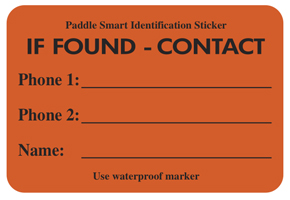Twice in March, the U.S. Coast Guard was called in to locate people in distress in Bay Area waters. Fortunately, both incidents were concluded without loss of life.
In the first incident, the Coast Guard was notified on March 2 of an unmanned kayak that had beached itself in Capitola with no markings and a single oar onboard. A 47-foot motor lifeboat from Station Monterey and an MH-65 Dolphin helicopter from Air Station San Francisco were immediately launched to the scene to commence searching for a possible kayaker in distress. Crews from Santa Cruz Harbor Patrol and Santa Cruz Fire Department were on scene assisting with shoreline and waterside searches.
The search was suspended when it became apparent that the unmanned kayak was related to an incident the prior Sunday in which a good Samaritan recovered a kayaker after he had become separated from his kayak within the same area. The operator’s kayak was not recovered at that time.
In the second incident, a stranded windsurfer was rescued on March 13 south of the San Mateo Bridge after radioing the Coast Guard for help.
The windsurfer contacted the Coast Guard with his handheld VHF radio after losing his board in southern San Francisco Bay. Sector San Francisco Command Center personnel immediately issued an urgent marine information broadcast, notifying mariners in the area of the distressed windsurfer. A 25-foot response boat from Station San Francisco, an MH-65 Dolphin helicopter from Air Station San Francisco, a Coast Guard Auxiliary Mobile Unit, and the Foster City Fire Department were all dispatched to the scene.
Once on scene, the Auxiliary Mobile Unit directed a good Samaritan to the location of the distressed windsurfer. Once recovered, the windsurfer was transferred to awaiting EMS personnel in Coyote Point Marina were he was transported to Sequoia Hospital in Redwood City.
The successful recovery of the windsurfer was a direct result of his possessing a handheld VHF radio. Without the ability to contact the Coast Guard once losing his board, the execution of this case could have been hindered dramatically.
The Coast Guard urges all mariners and water enthusiasts to exercise caution when on the water. Ensure you have the proper safety equipment and file a float plan with a family member or loved one ashore letting them know your intentions. Filing a float plan can be just as easy as sending a text message to a friend or posting a status update on your social media account. The most important thing is that you are prepared and that someone ashore is aware of your intentions and planned return.
Sticker Program to Aid Rescues, Conserve Resources
It might be the smallest of details, but it can also mean the difference between separating a successful search and rescue case from a missing person report or worse.
Coast Guard Pacific Area is launching Operation Paddle Smart, and the campaign, distributed broadly and aimed at reaching small craft owners enjoying the waterways, begins simply with a free sticker.
The weather-proof sticker, self-applied to the small craft, is intended to return property, reduce the number of Coast Guard resources spent on unnecessary search and rescue cases, and foster voluntary small craft owner assistance.
Diaz said putting two correct phone numbers on the reflective sticker is the most important thing to remember when filling out the owner information.
“If someone’s out on the water and their kayak has turned over, their cell phone is now at the bottom of the ocean. We want the alternate number to call and verify if there’s an emergency, or to return the property to its owner,” he said. “It’s all about having the right information.”
The Coast Guard created a team of Coast Guard and auxiliary boating safety experts to help get the word out to the public. The team worked for months developing strategic ways to make the sticker more effective and help the public obtain the free sticker.
“We all put in a team effort to turn this idea into a reality,” said Jeff Seifried, a member of the team. “Coast Guard districts will distribute the stickers to the sectors and auxiliaries, and each of those assets will provide the stickers to anyone who has a small, unregistered water craft or as they see fit.”
Seifried said the sticker is also going to be very beneficial to taxpayers.
“The benefit comes from being able to identify a real emergency. If the Coast Guard isn’t using resources searching for someone who isn’t missing, it’s going to save a lot of time and money. We’re not putting Coast Guard rescue crews at an unnecessary risk and at the same time, it could ease a family’s anxiety to know there isn’t an emergency,” he said.
Seifried said the team is working to educate the public about the free stickers and their importance. The stickers will be available by the 2010 boating season.
“It’s simple, extremely beneficial and free,” he said. “I can’t come up with a reason why you wouldn’t want to use it. With a little bit of information you can help the Coast Guard find your property or save your life.”


